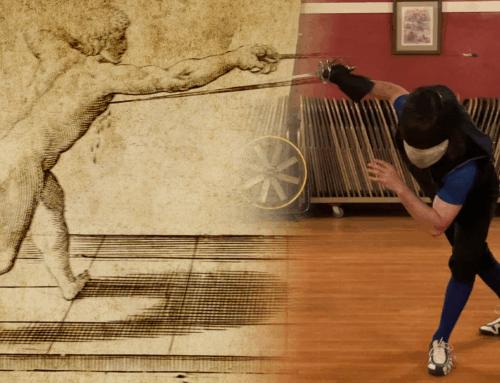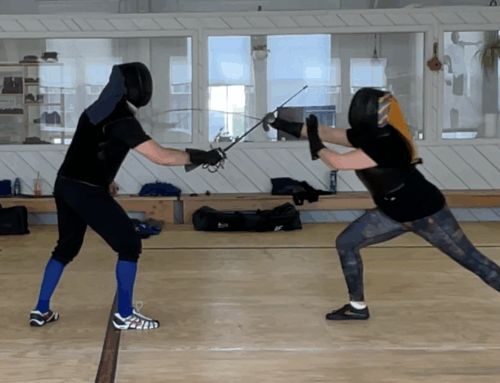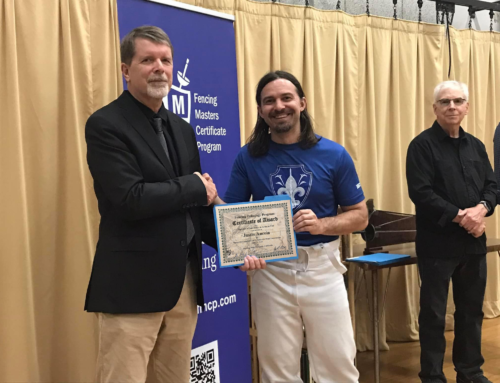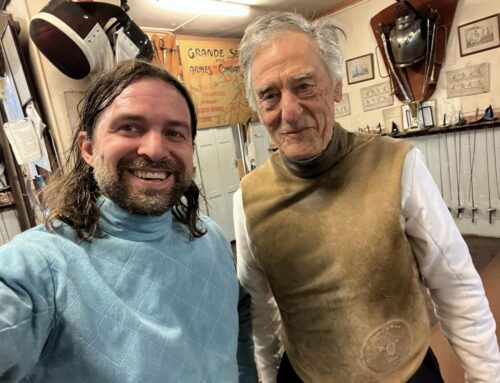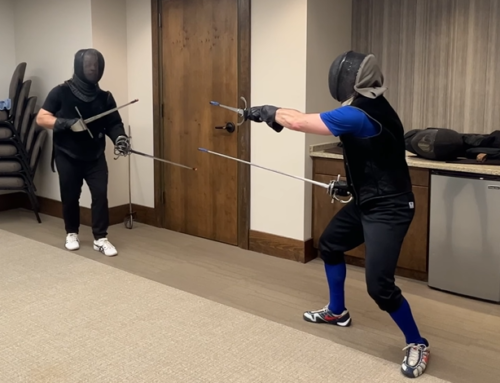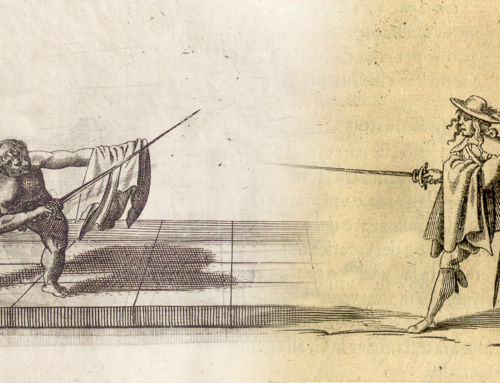Today we’ll be looking at the plays in Plate 15 of La Scherma by Francesco Ferdiando Alfieri. There are now two different translations out that I’m cross-referencing for these blog posts. I’ll eventually will go back to previous chapters and re-interpret them. A few chapters have some stark differences in translations. You can snag the Terminiello copy over on Amazon and the Tom Leoni version over on LuLu.
This post will go over Chapter XV, which is wounding your opponent while carrying the body out of presence, which is a more extreme version Chapter XIV, which covered voiding the body without a passing step.
So in more direct terms, “carrying the body out of presence” means removing your body out of line. This means your opponent’s attack will drift by your body safely. Alfieri says the move takes subtleness/finesse and mastery/proficiency to judge where/when the attack is coming from.
The Plays
As Alfieri is the Italian Buzzfeed Fencing Master, he says there are three ways of striking your opponent in this way.
Play #1. Gentleman 28 is in terza. Gentleman 29 finds & gains Gentleman 28’s sword. He then beats Gentleman 28’s debole with his forte. At the same time, he makes his attack while carrying his body out of presence (off line).
Alfieri doesn’t say which line to find/gain, but based on the direction you’re voiding, it makes sense to find in quarta on the inside line. Beat your opponent’s blade to their outside line and then do your void/attack with your hand in quarta. Should your opponent try to recover from this, your body is a) offline and b) you’ve closed off your inside line with the quarta guard. This corresponds with Plate 15.
Play #2. In this scenario, Gentleman 28 gets into measure first, however, Gentleman 29 anticipates this move and strikes with this void. Gentleman 29 does this without touching blades.
Alfieri’s second play of Plate 15 is literally one sentence long. This is 100% a timing move and would be really flashy to use, but the timing needs to be perfect. As your opponent comes into measure, you’ll want to time your move as they’re moving forward so their body can’t react to your attack. Keep your hand in quarta.
Also to consider is distance. If you’re a short fencer, your taller opponent will arrive into measure first. You need to be sure that you can reach them with this void/attack. The good news is you’re basically doing a passing step (albeit a backwards one), so you will gain some ground. I would also suggest playing with where you hit your opponent. The illustration shows a face shot, but see how it feels/works when aiming at the chest or lower abdomen.
Play #3. Gentleman 28 finds Gentleman 29’s sword on the outside line. Gentleman 29 performs a cavazione to get to the inside line. Gentleman 28 contracavazione in response. So then you ricavazione in the same tempo back to the inside line. In that same tempo, you void your body and thrust in quarta.
Hope your wrists and forearms are loose & nimble because this last play requires a lot of disengaging. When drilling this play, each cavazione will probably be it’s own separate tempo, but in reality you want all three to happen as quickly and smooth as possible — in the same tempo.
Extras. Alfieri also says that Gentleman 29 can strike by lowering his hand to Line B for a low quarta thrust or perform a cut along Line A. But he stresses the thrust in the basic image is the best technique to use when performing this move.





